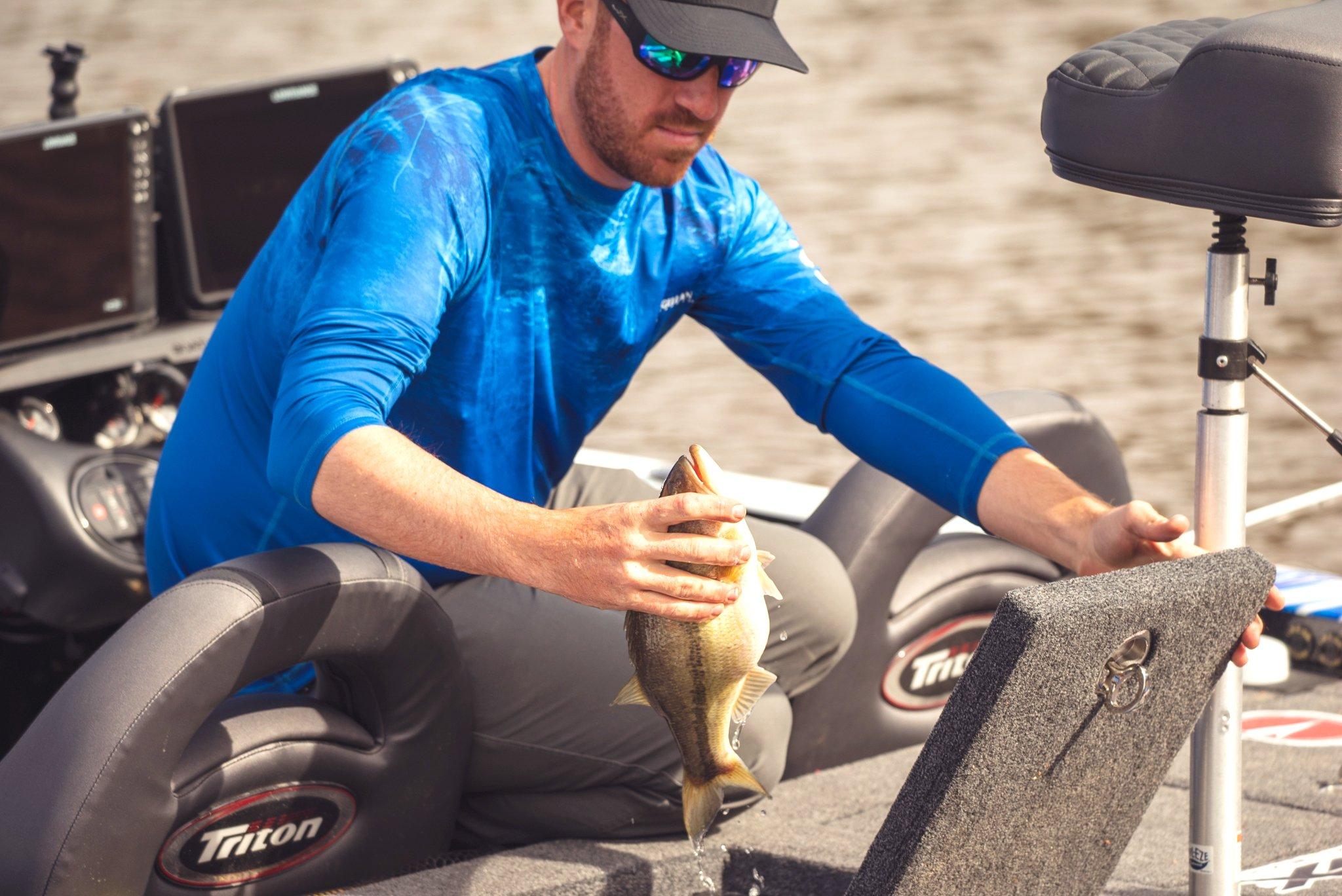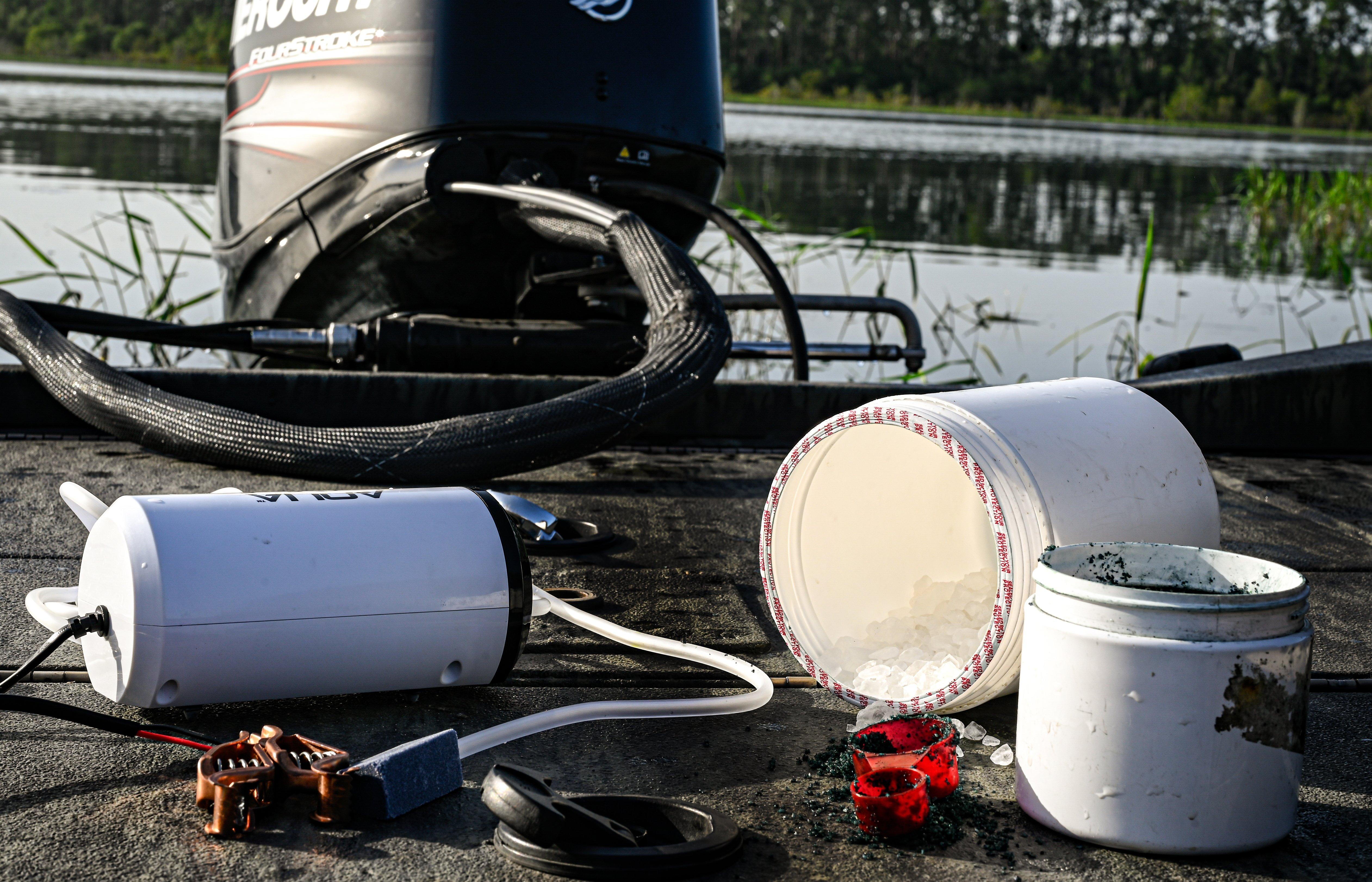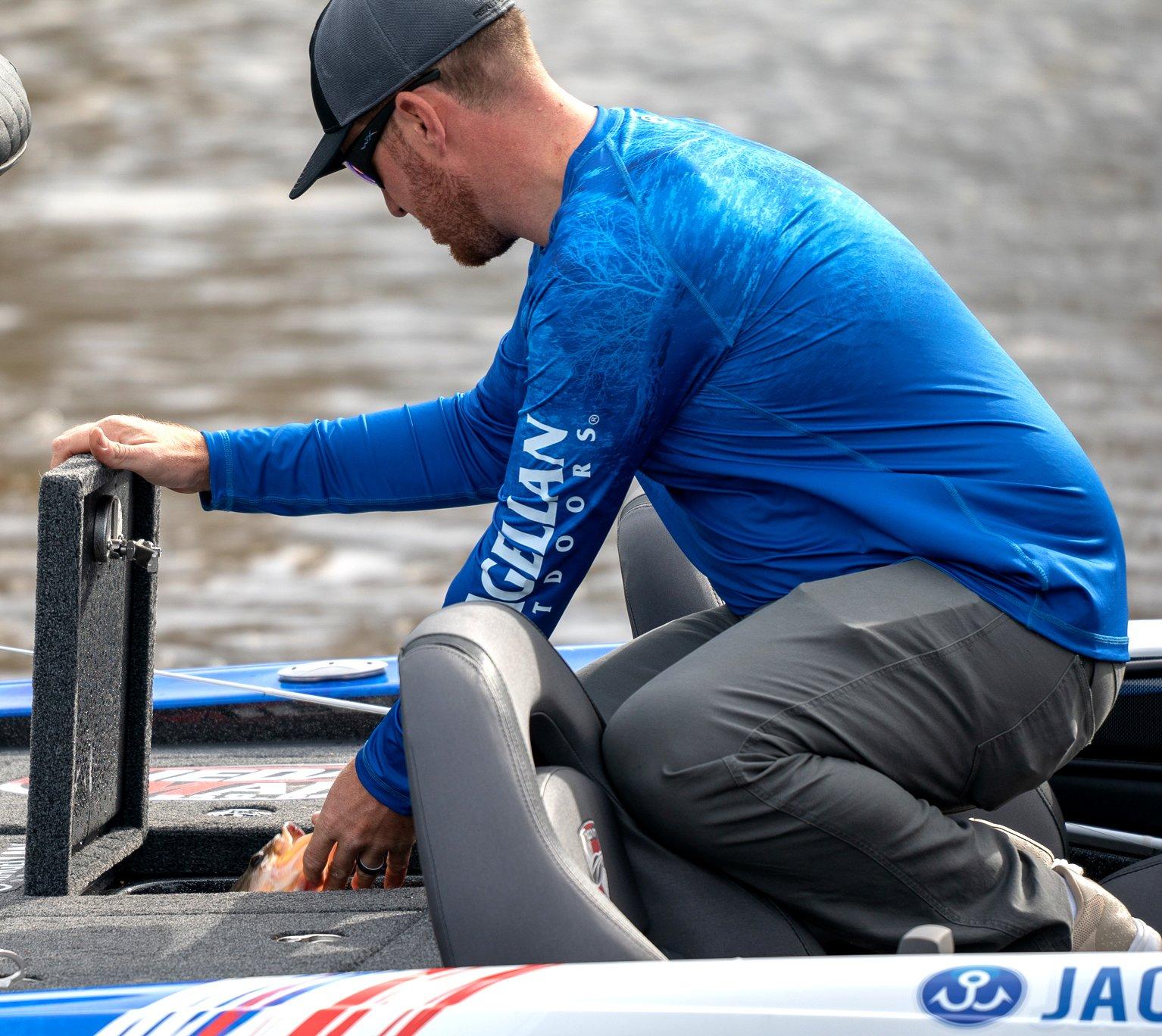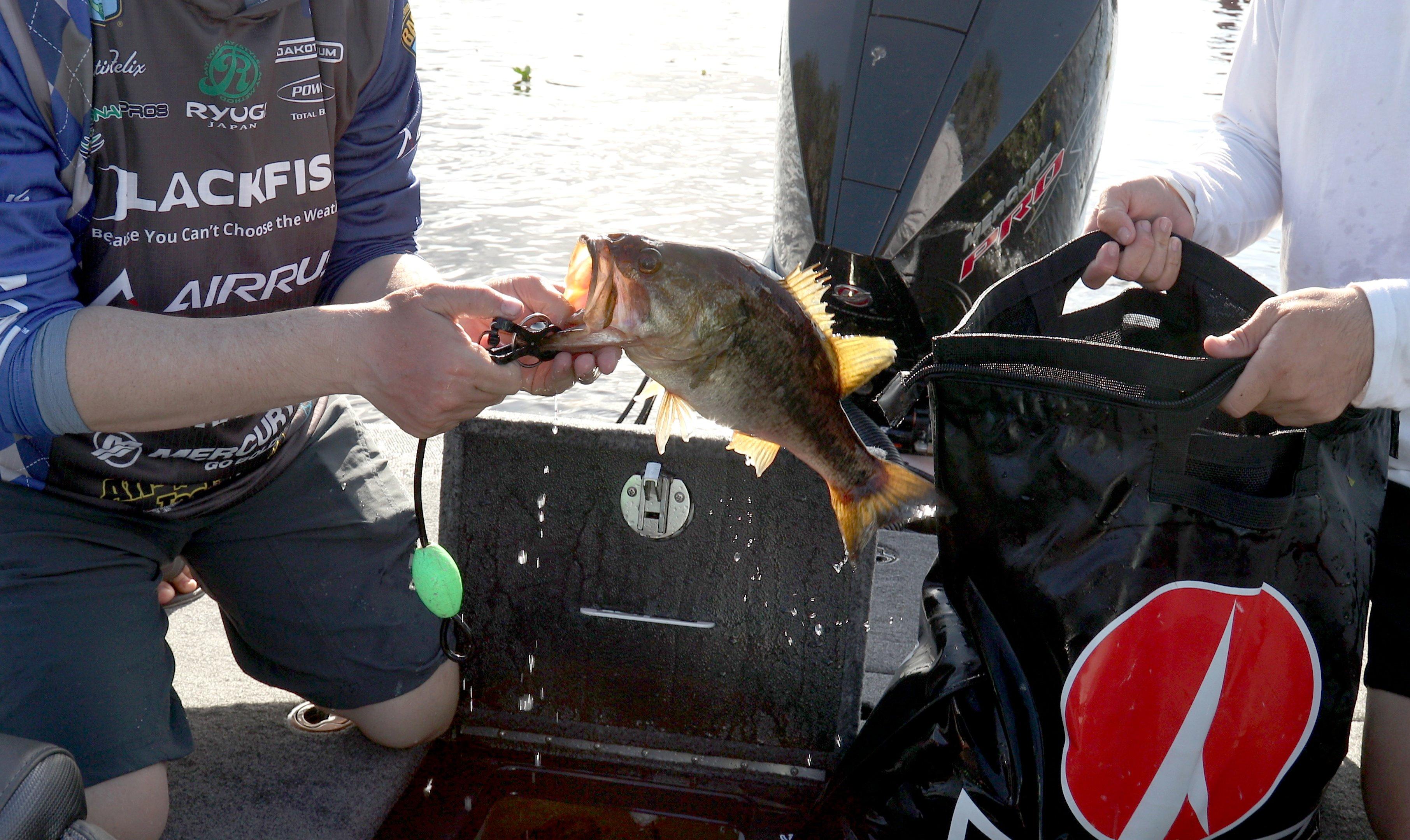Keeping your catch healthy requires planning and effort

A livewell is a great tool, if used properly. Image by Realtree
In 1973, the first livewell design was patented by a boat builder, and it helped create the concept of catch-and-release fishing. Prior to this all fish were kept, even those caught in large tournaments. With concern for the resource, attempts were being made to recycle fish, providing better fishing for the future.
Since that time, catch-and-release practices have infiltrated bass fishing to the extent that over 90% of all bass caught in the U.S. are released alive. Modern livewells allow for large tournaments to take place at nearly every major fishing venue across the nation. Yet, livewells aren’t perfect. In fact, scientific research has proven that as many as 40% of all bass caught and held in livewells may later die due to exposure to unhealthy conditions in the tank.
In order for a fish to remain healthy in a livewell, it must be cared for correctly.
So how do we ensure that our bass — or any fish for that matter — stay healthy in a livewell? By understanding the science and preventing toxic conditions. Follow along.
Don’t Miss: HOW MICKA BURKHART BROKE THE STATE BLUE CATFISH RECORD TWICE

Knowing how a livewell works is an important element in keeping it operational. Image by Millennium Promotions
KNOW HOW A LIVEWELL WORKS
This is critical to understand. Two modes exist on livewells: fresh water, or aeration cycles, and recirculating cycles. Sometimes this is controlled by a valve in the boat, likely marked “fill” and “recirc,” or something of the sorts. What’s important to remember is that one mode allows fresh water in, all the time, while the other simply recirculates the water already in the well.
Only one mode will fill the empty livewell, so let’s start there. We’ve caught a fish, and into the tank it goes. Start by filling the livewell all the way up, and allow the pumps to continue to run on the fill mode while you get back to fishing. Fresh water is continuously coming in, and going out the overflow. This is the best, freshest water we can get without any treatment, so it’s best to continue to cycle it through.
Here, let’s break for a little science lesson. When holding fish in a livewell, our biggest threats are reduced oxygen and increased toxins in the water. As fish respire and metabolize in your well, oxygen is used up, and carbon dioxide and ammonia are released. Each of these plays a major role in the health of your fish. For our purposes, we need to maintain high oxygen levels, and reduce toxins and waste. Let’s get back to the example.
The fresh water continues to run and, hopefully, you’ve caught a nice limit of fish. Even if not, after a few hours in the well, your catch needs to be cared for. What we’ll do now is set up for a quality holding environment.
First, switch the flow of water from fill, or freshwater, to recirculate. As we improve the living conditions in the well, we want to hold the treated water for a calculated amount of time.
Next, it’s best to reduce the temperature of the water, especially in the summertime. Cool water holds dramatically more oxygen than warm water. In fact, 50-degree water holds 50% more oxygen than water in the mid-80s. Your goal should be to reduce the temperature of water in your well by about 10 degrees. Gamefish can tolerate more, but our drop will help substantially.
Carry a spare cooler, if possible, for ice. When fishing in summertime bass tournaments, three bags of ice will often be needed to cool and maintain your livewell in the afternoon. A large, soft-sided cooler works perfectly. It can ride on the floor of the boat while fishing, and tossed in a compartment once you’ve used the ice.
For the most part, there’s no need to worry about chlorine or other additives in the ice when you place it in the well; most chemicals are removed from water when freezing. Regardless, we will be treating the water with an agent that removes any problem substances.
So, with a sizable livewell full, toss in an entire bag of ice. Leave the ice in the bag because it will melt slower and cool the water more efficiently. Just let the entire plastic bag float in the well.
Don’t Miss: SALMON SHARK DISCOVERED ON SHORE OF IDAHO RIVER LIKELY A PRACTICAL JOKE

Livewells are ideal for keeping fish alive, especially for a few hours. Image by Realtree
The next step is to add a conditioning chemical. For 30 years, I’ve used the original Catch-and-Release formula created in the early 1980s and offered as the first livewell additive, and find it to work as good or better than anything else. That product is now offered by Sure Life Laboratories, and includes a tranquilizer to calm fish, as well as salts to balance electrolytes and help heal wounds, and agents to remove any toxic chemicals and chlorine.
Time now for some more input: fisheries managers and aquaculture professionals — the folks with the oxygen tanks and rubber nets — always use sedatives when transporting fish, never any chemicals that promise to make fish more frisky. Take note when choosing your additives.
I also add non-iodized salt. Rock salt, water system salt; anything without iodine. Handling and transporting fish for seminar promotions taught me that high levels of salt really help. Along with the salt in my chemical agent, I dump in an additional half-pound each time I treat my well. It helps buffer pH, removes toxins, and promotes slime generation of the gamefish.
With your well cooled 10 degrees, and a measured amount of chemical added, run your livewell pumps on recirculate continuously. There is no reason to ever have your pumps cycle on a timer. When the water is warm, run them continuously. Also, plug the outflow of the well if you might lose water out of the overflow. Navigating rough water can do this.
A simple product that will dramatically increase oxygen in your well is a bubble pump. Inexpensive models clip directly on a boat battery and cost about $30. By pumping air directly into the water, bubble pumps can double the dissolved oxygen in your well. And don’t worry; bubble pumps use almost no power. I ran one for a week on a battery and lost very little charge.
We’re creating a quality environment for the fish. Cool, highly oxygenated water is the biggest key. With the livewell full and running, chemicals, salt and bubbles added, keep your lids closed and don’t handle the fish.
After two hours, it’s time to do a flush. Remember, fish in the well are releasing toxins. Some are being neutralized by the water conditioner, but it’s still important to flush the majority of the water in the well to remove contaminants.
Most livewells offer a pump-out function. If not, you’ll need to open the drain, or bucket out 3/4 of the water in the well, preferably removing water from the bottom. Once the water has been substantially drained down, immediately fill the wells, and repeat the conditioning process. Water, ice, chemical, bubbles. Hold 2 hours. Repeat through the reminder of the fishing day.
Come weigh-in time, fill your bag with the water from your wells, not the lake water at the boat ramp. Remember, you’ve got premium, conditioned water; take advantage of it. Even in the weigh-in line, at the “bump tub”, don’t transfer any water to your bag unless its good and cold, and treated. Chances are, you still have the best living environment in your bag, because you’ve taken the time to build it.
Creating optimum conditions takes pre-planning and a bit of work, but the boost in the health of your fish will be immediately noticeable when you follow these guidelines.

Most bass are released today, but that doesn’t mean they don’t hop into the livewell for awhile. Image by Millennium Promotions
BONUS: TO FIZZ OR NOT?
I’m often questioned about “fizzing” deeply caught fish, especially smallmouth bass. This practice allows fish to ride correctly in the tank, rather than staying near the top. I usually advise against this procedure, as it is difficult to do correctly in a boat. Don’t be tempted to fizz a bass in the throat; this can be deadly, and should not be substituted for fizzing laterally. I’ve found it best to leave fizzing to the tournament staff, as they are experts in the field. Just be sure to inspect your livewell for any sharp objects on the underside of the lid if your bass are near the surface, and only fill to 3/4 full.
Finally, let’s dispel a few myths: sodas or sugary liquids do not help heal hook wounds in fish. This has been tested by biologists. However, catch-and-release chemicals have been shown to do so by rubbing on the bleed.
Also, hydrogen peroxide does not increase oxygen in a livewell, and can prove to be deadly if dumped in. Got it? Follow the system, and free the fighter.
Don’t Miss: TAMPA MAYOR HAULS IN LARGE PACKAGE OF COCAINE WHILE FISHING IN FLORIDA KEYS










